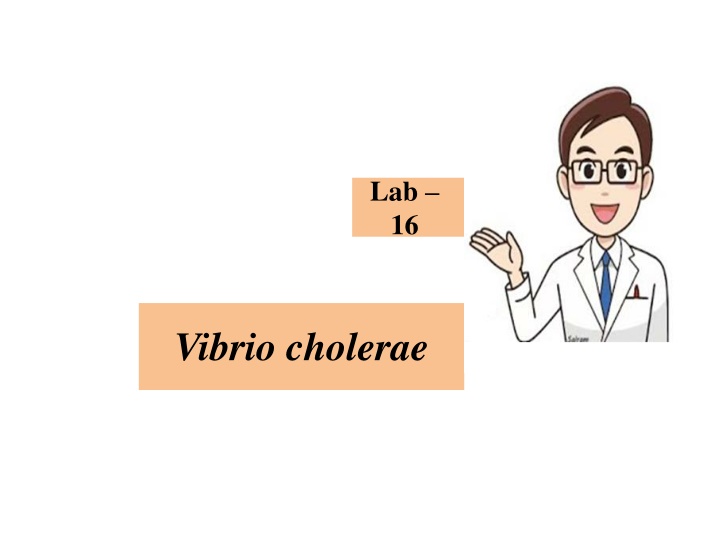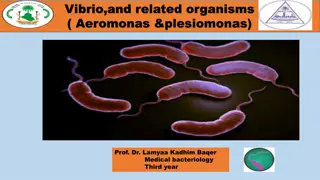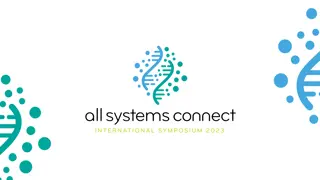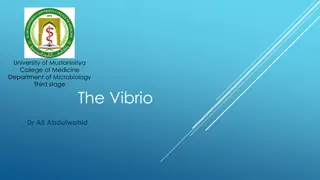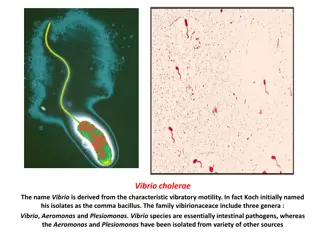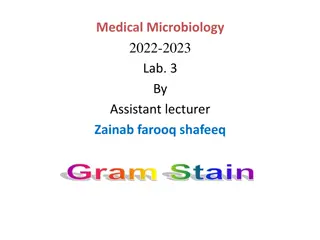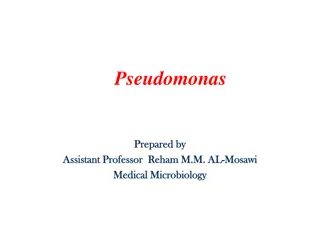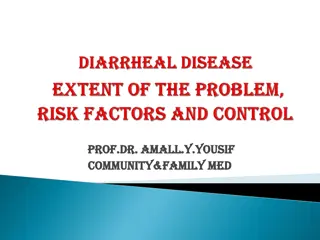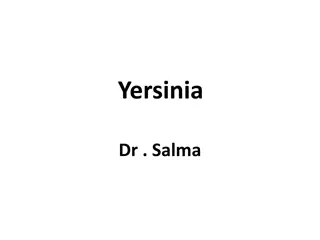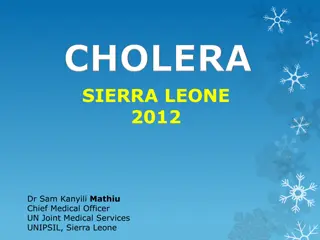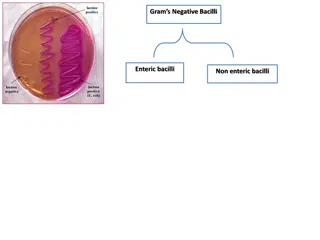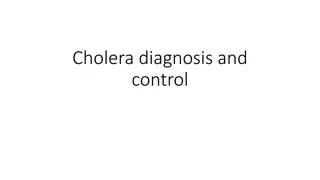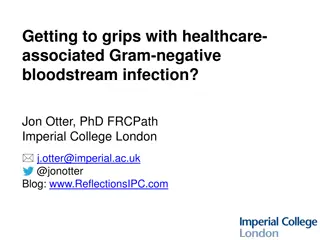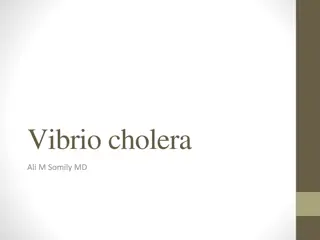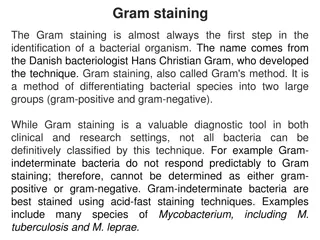Vibrio Cholerae: Gram-Negative Bacterium Causing Cholera
Vibrio cholerae is a Gram-negative comma-shaped bacterium that is motile with a polar flagellum and is responsible for causing cholera in humans. This bacterium enters the human body through ingestion of contaminated food or water, primarily affecting the intestine and releasing cholera toxin. Laboratory diagnosis involves specific specimen requirements, staining procedures, and culture methods on selective agar medium. Biochemical tests, IMVIC tests, and Triple Sugar Iron tests help in identifying Vibrio cholerae. Understanding the characteristics and diagnostic methods of Vibrio cholerae is crucial for effective management and prevention of cholera outbreaks.
Download Presentation

Please find below an Image/Link to download the presentation.
The content on the website is provided AS IS for your information and personal use only. It may not be sold, licensed, or shared on other websites without obtaining consent from the author.If you encounter any issues during the download, it is possible that the publisher has removed the file from their server.
You are allowed to download the files provided on this website for personal or commercial use, subject to the condition that they are used lawfully. All files are the property of their respective owners.
The content on the website is provided AS IS for your information and personal use only. It may not be sold, licensed, or shared on other websites without obtaining consent from the author.
E N D
Presentation Transcript
Lab 16 Vibrio cholerae
Vibrio cholerae Is a Gram negative comma-shaped bacterium motile with a polar flagellum causes cholera in humans. The types of V. cholerae according to their antigenic structure; a-classical type b- El tor c- ogawa d- inaba e- hikojima V. cholerae enters the human body through ingestion of contaminated food or water. The bacterium enters the intestine, imbeds itself in the villi, replicates and releases cholera toxin.
Vibrio cholerae Laboratory diagnosis: 1. Specimen: Stool, rarely vomit. Transport media include a. Sea salt medium b. Alkaline peptone water. enrichment broth. 2. Staining: gram negative bacilli or comma shaped.
Vibrio cholerae Culture: TCBS (Thiosulfate citrate bile salt sucrose medium) is a selective agar medium Indicator bromothymol blue .Control is green ( prepared as plates ) After inoculation with suspected bacteria and a 18 to 24 hours incubation at 35 to 37 C on TCBS agar, colonies of V. cholerae will appear as yellow, shiny colonies, 2 to 4 mm in diameter. The yellow color is caused by the fermentation of sucrose in the medium. Sucrose-non-fermenting organisms, such as V. parahaemolyticus, produce green to blue-green colonies.
Vibrio cholerae Thiosulfate-Citrate-Bile Salts-Sucrose (TCBS) Agar
Vibrio cholerae Biochemical tests: Vibrio cholerae appears as a late lactose fermenter - Motile - Urease -ve - Oxidase +ve - TSI ; A or k /A Gas ve, H2S ve
Vibrio cholerae IMVIC Bacteria spp. I M VI C + _ + Vibrio cholerae + +
Vibrio cholerae Triple Sugar Iron TSI Bacteria spp. H2S Butt Slant Gas - Acid Acid or Alkaline Vibrio cholerae _
Vibrio cholerae Motility Test Bacteria spp. motility + Vibrio cholerae
